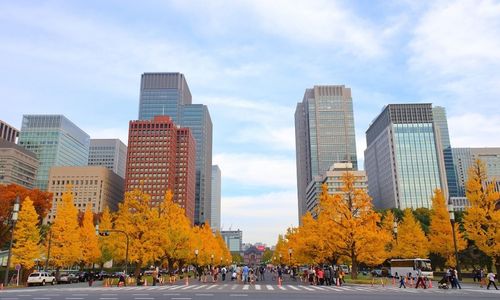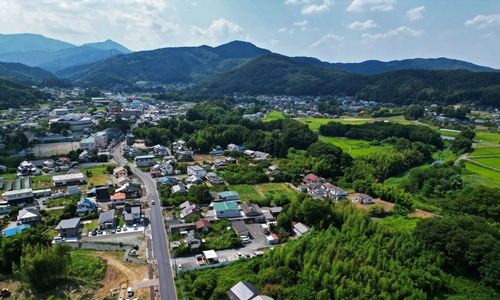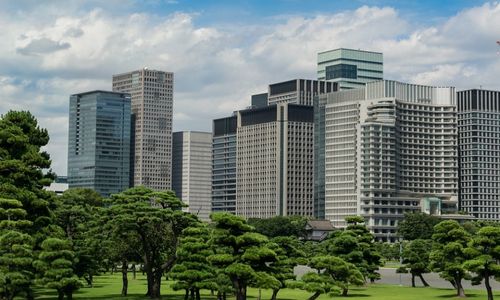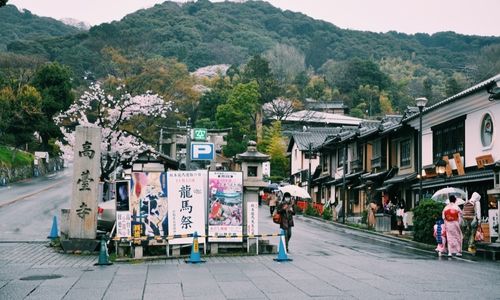Japan’s major urban centers, Tokyo, Osaka, Fukuoka, buzz with innovation, lifestyle, and cultural depth. Beyond their lively streets, smaller towns and neighborhoods reveal a gentler pace, rooted in community and everyday simplicity. These contrasting settings showcase Japan’s diversity, where modern ambition meets timeless charm. This overview takes you through both the energetic pulse of city life and the quiet appeal of life just beyond the skyline.
Japan’s Most Populated Cities
Japan is known for its vibrant cities, each with its own character, culture, and population size. Below is a list of the five most populated cities in Japan, based on the latest available data. These cities are ranked by the number of people living within their official administrative boundaries, not including surrounding suburban areas. As expected, Tokyo leads by a wide margin, followed by major urban centers like Yokohama, Osaka, and others.
|
Rank |
City |
Estimated Population |
|
1 |
Tokyo (23 Wards) |
~14.2 million |
|
2 |
Yokohama |
~3.77 million |
|
3 |
Osaka |
~2.75 million |
|
4 |
Nagoya |
~2.19 million |
|
5 |
Sapporo |
~1.88 million |
This table offers a snapshot of Japan’s largest cities by population, clearly illustrating the scale and influence of Tokyo compared to other urban areas. With more than 14 million people living in its 23 special wards, Tokyo dominates as the country’s primary economic and cultural powerhouse. In comparison, major cities like Yokohama, Osaka, Nagoya, and Sapporo continue to thrive as important regional centers. These population figures reflect not only where people live, but also where innovation, commerce, and daily life in Japan are most concentrated, highlighting the dynamic nature of Japan’s urban landscape.
What Defines a City’s Size in Japan?
In Japan, a city’s size is measured not just by its population, but also by how it functions. Official classifications depend on administrative status, population density, and economic activity.
Tokyo, for example, is a designated city with over 14 million residents in its 23 wards. When including surrounding Japanese suburbs like Saitama and Chiba, the Greater Tokyo Area reaches nearly 37 million people. These areas are linked through commuting patterns, forming what’s called a metropolitan area.
Other methods, like Densely Inhabited Districts (DID) and Urban Employment Areas (UEA), focus on where people actually live and work. This helps explain income trends, such as the difference between median income in Japan and mean salary in Japan. While the Japanese average salary is around ¥4.6–5 million per year, the median income is slightly lower, giving a better picture of the Japanese middle class.
The amount people earn depends heavily on where they live. The median household income in Tokyo is higher than in rural areas, but so are Japanese housing costs. As a result, many workers live in Japan suburbs to save on rent while maintaining access to city jobs.
Whether you’re exploring Japanese salaries, minimum wages, or the lifestyle of Japanese trading houses, understanding how Japan defines its cities is key to seeing the full picture of urban life and labor.

Japan’s Urban Scale & Income
Urban vs. Rural Areas in Japan: Key Differences
When it comes to daily life in Japan, the contrast between big cities and the countryside is striking. From housing and jobs to pace of life and community, each setting offers a very different experience.
In urban hubs like Tokyo, Osaka, and Nagoya, everything moves quickly. Public transport is efficient, career opportunities are abundant, and modern conveniences are everywhere. That said, living in the city comes with a price, small apartments, expensive rent, crowded trains, and a more fast-paced, individual lifestyle. While salaries may be higher, especially the median income in Tokyo, so are everyday costs, from groceries to housing.
On the flip side, rural regions in Japan offer a slower, quieter way of life. Homes are more spacious, nature is at your doorstep, and there’s a stronger sense of community. Rent is much more affordable, and many families enjoy a peaceful environment perfect for raising children or retiring. However, life outside the city can also mean fewer job openings, limited public services, and longer travel times for things like shopping or healthcare. With the younger generation heading to the cities, rural areas are slowly shrinking and aging.
Whether you’re drawn to the excitement of city life or the calm of Japanese suburbs, both have unique pros and cons. Urban areas provide energy, diversity, and opportunity, while the countryside brings space, connection, and simplicity. In the end, your choice depends on what kind of lifestyle you’re looking for, and how you want to balance cost, comfort, and community in Japan.

City vs. Countryside Life Japan
How Urban, Suburban, and Rural Communities Function in Japan
Community life in Japan is well-organized and deeply rooted, whether you’re in a bustling city, a quiet suburb, or the countryside. Each area has its own systems, but all aim to promote safety, connection, and sustainable living.
Urban Areas
In major cities like Tokyo or Osaka, communities function efficiently despite high population density:
- Kōban (small police boxes): Located at street corners, these enhance neighborhood safety and offer assistance.
- Chōnaikai (neighborhood associations): Organize local festivals, share emergency information, promote cleanliness, and strengthen neighborly ties.
Suburban Areas
Suburban neighborhoods, such as those in Saitama or Chiba, are home to many families:
- Houses are generally more spacious than in city centers, ideal for raising children.
- Communities are increasingly focused on elderly care due to aging demographics.
- Investments are being made in public transport and amenities like schools and parks.
Rural Areas
In the countryside, such as Tottori, Yamagata, or parts of Hokkaido, communities are close-knit and rich in tradition:
- Kominkan (community centers): Host workshops, cultural activities, and disaster-prevention seminars.
- Satoyama: A model of living in harmony with forests and farmland, managed collectively for sustainability.
- These areas face aging and population decline, but some villages are being revitalized through youth programs and agricultural startups.
Urban–Rural Connections:
- Programs like “Hometown Tax” encourage urban residents to support rural towns by donating in exchange for local products.
- Some rural towns sell fresh produce in Tokyo supermarkets and host school exchanges to keep cultural ties strong.
Rural Areas and Urban Centres: A Shift in Balance
Thinking of moving to Tokyo and securing a place to live? Finding a home in Japan’s capital might seem overwhelming at first, but with the right steps, renting or purchasing property in Tokyo becomes much more manageable. If you’re exploring how to rent an apartment in Tokyo, start by browsing local housing platforms or connecting with bilingual real estate agents who understand the needs of international renters.
Curious about Tokyo apartment rental prices? Rental prices vary based on location, apartment size, and proximity to train stations. For example, monthly rent in outer suburbs can be budget-friendly, while properties near city centers tend to be pricier. If you’re curious about how to find an apartment in Tokyo efficiently, using filtered search tools can save you time and match your preferences quickly.
For those looking to settle more permanently, buying an apartment in Tokyo is also worth considering. There are plenty of options when it comes to flats for sale in Tokyo, from compact city studios to spacious family units. Many professionals also explore how to buy apartments in Tokyo as a long-term investment, especially with stable interest rates and modern infrastructure.
Financial planning is key when moving to Japan. The average yearly income in Japan typically falls between ¥4.8 and ¥6.2 million, depending on job type and experience. A good salary in Japan can support comfortable city living, especially when you factor in housing and daily expenses. Meanwhile, the hourly wage in Japan starts at around ¥1,100 in most prefectures, with some areas offering more depending on demand. Understanding the basic salary in Japan, as well as the average wages in Japan, gives you a better idea of what to expect before signing any rental or purchase contracts.

Moving to Tokyo Rent and Salary
Pros and Cons: Living in a Rural Area vs. Urban Area
Deciding between urban life and the countryside in Japan means choosing two very different ways of living. City life, especially in places like Tokyo, Yokohama, or Osaka, is all about convenience, opportunity, and excitement. These urban centers are packed with modern infrastructure, diverse dining options, cultural attractions, and job prospects. If you enjoy being in the middle of the action, surrounded by people and possibilities, city living might suit you best. But it also comes with trade-offs: high living expenses, smaller apartments, and the daily hustle that can leave you feeling drained.
In contrast, rural Japan offers space, serenity, and a stronger connection to nature. Life in the countryside flows at a more relaxed pace, with fresh air, open fields, and friendly local communities. You’ll find more affordable housing, larger homes, and a lifestyle that encourages sustainability and self-reliance. However, the slower pace also means fewer services, limited public transport, and less access to big-city amenities. Employment options can be more limited, and social integration may take time, especially if you’re new to the area.
In the end, it’s about what matters most to you, whether it’s convenience and opportunity or peace and simplicity. Japan offers both worlds, and each has its own unique rhythm and rewards.

Urban Life vs Rural Japan
Conclusion
Japan is quietly leading a new era of city building, one that blends advanced technology with everyday human needs. From eco-conscious smart towns to fully connected communities like Woven City, the country isn’t just modernizing, it’s rethinking what urban life should look like. These efforts go beyond infrastructure; they reflect a shift toward sustainability, inclusiveness, and adaptability in the face of social and environmental change. Whether you’re drawn to high-tech innovation or thoughtful urban planning, the future of Japanese cities promises to be as forward-thinking as it is livable.






Leave a Reply